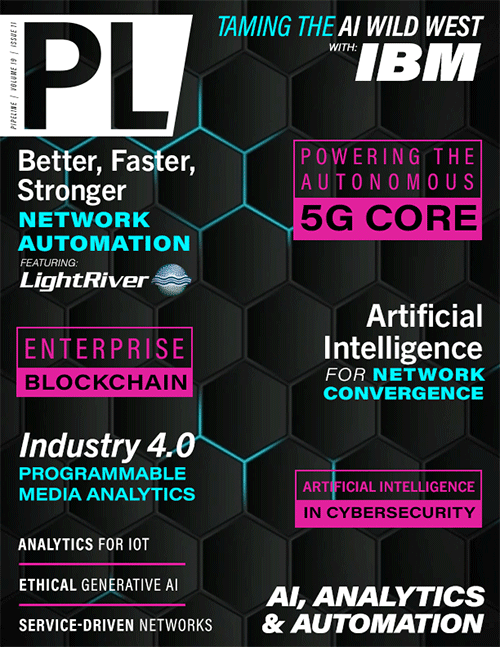AI for Converged Networks
Now, let us focus on something that is on the mind of every IT person–including Person X, but somehow never seems to get done—and that is optimizing a network that’s already working. The reality
is that IT is reluctant to tinker with a functioning network because of the risk of introducing new problems. Because of this reluctance, IT gives up opportunities to make their networks better;
but here again, AI changes the equation to the benefit of the enterprise.
AI can perform 24x7x365 CT scans of the entire network, constantly monitoring its configuration and analyzing network data to find opportunities to make your network more efficient and performant. What if AI provided Person X with insightful options to optimize the network by offering details on what changes are possible, the estimated benefits these changes would deliver and even offer a one-click option to implement that change. I can easily believe that Person X would eagerly take advantage of such guidance.
Lastly, let us consider AI’s role in core Wi-Fi. To do so, we need to understand radio resource management (RRM). RRM is responsible for efficiently allocating and managing radio resources in Wi-Fi networks. It is crucial for optimizing network performance and ensuring that end users receive consistent quality of service (QoS). Traditional RRM methods have their own challenges, however; among these are interference, channel congestion, inability to handle dynamic environments, lack of coordination, load balancing among neighboring Wi-Fi access points, and others. Traditional, non-AI RRM solutions base their decisions on fixed thresholds and rules that can’t always account for changing network conditions degrading performance and increasing operational costs.
To illustrate these limitations, let us take a look at one example. In 2.4 GHz Wi-Fi, there are only three channels that have non-overlapping frequency space. You do not have to be a professional wireless engineer to get your channel planning right when you’re only working with three channels.
Now, if we look at 6 GHz Wi-Fi, that all changes. With channels that are 59 at 20 MHz wide, and with six channel width options, it’s soon obvious that manual optimization of channel and channel width parameters necessary for a finely tuned Wi-Fi network become ridiculously complicated, even for the most experienced wireless engineers.
Once again, AI rebalances the equation. AI-driven cloud RRM technology would combine the power of AI and cloud computing to optimize the allocation and management of radio resources in advanced wireless communication networks. It would leverage machine learning (ML) algorithms to analyze vast amounts of data and make informed decisions on how to allocate radio resources, increase capacity, and reduce interference. Its cloud-based infrastructure would be scalable, resilient, and cost-effective.
In spite of this, one should note that AI doesn’t eliminate the valuable work of human intuition. Person X and the team have a great many years’ experience and may want to test a hunch about the effect of a particular network change. Testing these hunches involves risk that seasoned professionals are reluctant to take on, and potentially important improvements go undiscovered for fear of the sudden wrath of an overwhelmed help desk. Even here, AI can support the network by monitoring and analyzing IT hardware and software changes, along with their impact on network KPIs.
Multi-access converged networks also require Person X and team to manage and monitor network health on a variety of different panels and dashboards, with each one providing just a part of the larger picture of their wired and wireless networks. In the best-case scenario, they may have a unified management console, but even this cannot compare to what’s possible from AI management; it has the capacity to integrate all information into a single interface that can use simple English. Person X can simply ask it, “How is the network today?” or “What are the top applications?” or even, “Is my network meeting expectations?” AI tools can not only reply in straightforward terms, but also guide Person X to the correct menus to perform actions, rather than requiring them to hunt them down.
In summary, AI’s growing role in managing converged enterprise networks brings intelligence and automation to network operations, leading to improved reliability and scalability. It provides relief for overtaxed IT resources and extra reliability for enterprise networks. It can even unlock the full potential of the most advanced Wi-Fi technologies. As AI technology continues to advance, its role in network management will become even more critical in the future. As the newest player on the IT team, AI is poised to be every bit the game-changer it’s expected to be.


















